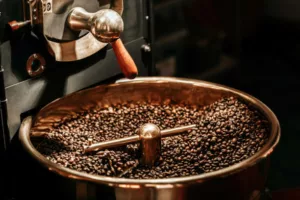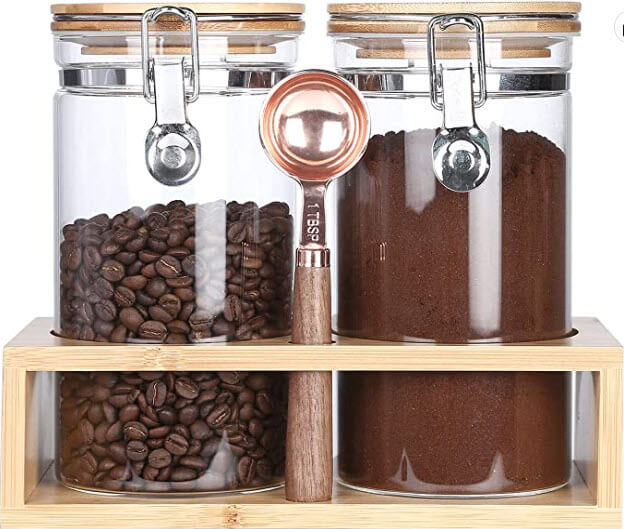Do you find yourself yawning at your usual cup of coffee in the morning? Are you looking for a way to take your caffeine game to the next level? Look no further than how to roast my own coffee beans at home! Not only will it provide you with a delicious cup of coffee, but it will also give you a fun and educational experience.
Before we dive into the nitty-gritty of the roasting process, let’s first talk about why you should even bother roasting your own coffee beans at home. First and foremost, it allows you to control the flavor profile of your coffee. You get to choose the type of beans you use, the roast level, and the brewing method, giving you the power to create a personalized cup of coffee that perfectly suits your taste buds.
Now, onto the roasting process. The basic idea is to apply heat to the beans until they reach your desired roast level. It’s important to note that there are different roast levels, ranging from light to dark, each with its own unique flavor profile. The roasting process can be done using various methods, such as a stovetop popcorn maker, an oven, or a dedicated coffee roaster.
So, how exactly do you roast your own coffee beans at home? Fear not, my caffeine-craving friend, for we will cover that in detail later in the post. But first, let’s discuss what you can expect to learn. By the end of this post, you will know the following:
- How to choose the right beans for roasting
- What equipment you need to roast your own coffee beans at home
- How to properly prepare your workspace and equipment for roasting
- The different stages of the roasting process and how to achieve your desired roast level
- The importance of cooling and storing your freshly roasted beans
So, grab yourself a cup of coffee (preferably freshly roasted) and get ready to become a coffee-roasting connoisseur. And remember, if at first you don’t succeed, just blame it on the beans!
Choosing the Right Beans
Now that we’ve covered why and how to roast my own coffee beans at home, it’s time to talk about the different types of coffee beans you can use in your roasting adventure. There are two main types of coffee beans: Arabica and Robusta.

Arabica beans are known for their mild, smooth flavor and low acidity. They also tend to have a higher price point due to their desirable flavor profile. Robusta beans, on the other hand, are known for their stronger, more bitter flavor and higher caffeine content. They are also generally less expensive than Arabica beans.
But wait, there’s more! Within each of these types of coffee beans, there are also different varieties with unique flavor profiles. For example, some popular Arabica varieties include Bourbon, Typica, and Geisha, while popular Robusta varieties include Canephora and Excelsa.
When choosing beans for roasting, it’s important to consider the flavor profile you’re looking for. Do you want a mild, smooth cup of coffee or a strong, bold cup? Do you prefer a fruity or nutty flavor? Experiment with different varieties and roast levels to find the perfect combination for your taste buds.
So, go forth and explore the world of coffee beans! Just remember to keep an open mind and a curious palate. And if you find yourself lost in the sea of bean varieties, just remember that no matter what, coffee is always a good idea.
“Looking for a fresh, customizable coffee experience? Look no further than our 3lb bag of single origin unroasted green coffee beans! Specialty grade and direct trade from a single Nicaraguan estate, these beans offer a unique flavor profile that’s sure to impress. Whether you’re a seasoned home roaster or just starting out, these beans are perfect for creating a delicious cup of coffee that’s uniquely yours. Don’t settle for ordinary coffee – upgrade to the best with our single origin unroasted green coffee beans.” Price At Time Of Publish – $21
View On Amazon“Bean There, Done That: Factors to Consider When Choosing Beans for Your Roasting Adventure”
When it comes to choosing the perfect beans for your roasting adventure, there are a few factors to consider. First and foremost, you’ll want to consider the origin of the beans. Different regions produce beans with unique flavor profiles due to variations in climate, soil, and processing methods. For example, beans from Central and South America tend to have a mild, nutty flavor, while beans from Africa have a more fruity, floral flavor.
Another factor to consider is the roast level you’re aiming for. Some beans are better suited for light roasts, while others shine in darker roasts. For example, Ethiopian beans are known for their fruity, floral flavor. They are often roasted light to preserve those flavors, while Sumatran beans have a more earthy, spicy flavor that comes through best in a darker roast.
Lastly, consider the freshness of the beans. Fresh beans will provide a better flavor profile, so try to choose beans that have been recently roasted and have not been sitting on a shelf for too long.
Overall, the key is experimenting and trying different varieties to find what works best for your taste buds. Don’t be afraid to take risks and try something new. After all, the beauty of roasting your coffee beans at home is creating a customized cup of coffee that perfectly suits your preferences.
So, get ready to embark on a flavorful journey, and don’t forget to enjoy the ride (and the coffee, of course)!
related article – Why arabica coffee is so popular
Have you ever wondered why Arabica Coffee is so popular, I know I did before taking that first wonderful sip! I think I was about 35 years old when I had my first sip of Arabica coffee. My friends and I were in a local café, trying to study for our upcoming exams (I was … Read More >>

“Bean There, Sipped That: Tips for Selecting Beans That Will Leave You Brew-tifully Satisfied”
Now that we’ve covered the factors to consider when choosing beans for roasting let’s dive into some tips for selecting the best beans for your taste preferences. After all, the key to a perfect cup of coffee is all in the beans!
First and foremost, consider your preferred flavor profile. Do you like a bold, strong cup of coffee or a mild, smooth cup? Do you prefer a fruity or nutty flavor? This will help you narrow down the types of beans you should be looking for.
Next, consider the roast level you prefer. As mentioned earlier, different beans are better suited for different roast levels, so knowing what you’re aiming for will help guide you in your selection. Remember that lighter roasts will preserve more of the beans’ natural flavors, while darker roasts will produce more of the roasted, smoky flavor.
When selecting beans, it’s also important to consider their freshness. Look for beans that have been recently roasted and have not been sitting on a shelf for too long. You can also consider purchasing from local roasters, who often roast in small batches and can provide a fresher product.
Lastly, don’t be afraid to try something new! Coffee beans come in various flavors and origins, so don’t limit yourself to what you know. Try a new variety or origin and see how it stacks up against your usual go-to beans.
So, there you have some tips for selecting the best beans for your taste preferences. Remember to have fun and explore the wonderful world of coffee. And if all else fails, just remember that any cup of coffee is better than no coffee at all!
related article – master making a good cuppa at home
Today, we will show you how to make a good cup of coffee at home that will rival any coffee shop brew. Are you tired of mediocre coffee that just doesn’t hit the spot? Are you tired of shelling out your hard-earned cash for a cup of Joe that leaves you wanting more? Well, fear … Read More >>

Preparing Your Roasting Equipment
Now that we’ve covered the beans let’s talk about the equipment and workspace you’ll need to roast my own coffee beans at home. Get ready to channel your inner coffee scientist!
First up, the equipment. The most basic setup for home roasting involves a roasting machine, a scale, and a colander. Of course, fancier machines and tools are out there, but these basics will get the job done. You can purchase a dedicated coffee roasting machine, or use a stovetop popcorn maker or even an oven to roast your beans.
Once you’ve got your roasting machine, it’s time to prepare it for use. This can involve anything from cleaning it to adjusting the temperature settings. Be sure to read the instructions for your specific machine and follow them closely to ensure you’re using it correctly.

Now, let’s talk about preparing your workspace. Roasting coffee beans can be messy, so it’s important to have a dedicated workspace that you don’t mind getting dirty. Lay down a towel or newspaper to catch any stray beans or chaff. And if you’re using a dedicated roasting machine, be sure to place it near a vent or an open window to help dissipate any smoke that may be produced during the roasting process.
Lastly, don’t forget about safety! Roasting coffee beans involves high heat, so taking precautions is important to avoid burns or fires. Wear protective gear, such as heat-resistant gloves, and never leave your roasting machine unattended while in use.
With these tips in mind, you can start roasting your coffee beans at home! So, put on your lab coat and prepare to create your perfect cup of coffee. And if anyone asks, just tell them you’re a coffee-roasting mad scientist!
The Roasting Process – How To Roast My Own Coffee Beans
Now that you know how to choose the perfect beans and have prepared your equipment and workspace, it’s time to dive into the roasting process. Get ready to become a master roaster!
The roasting process typically involves four stages: drying, browning, first crack, and second crack. During the drying stage, the beans will release moisture and begin to turn yellow. The browning stage involves the beans turning brown and developing their characteristic coffee aroma. The first crack marks the point at which the beans begin to expand and release carbon dioxide, producing a popping sound. Finally, the second crack occurs as the beans continue to expand and release oils, resulting in a darker roast.

Now, let’s talk about tips for achieving your desired roast level. As mentioned earlier, different beans are better suited for different roast levels, so it’s important to know what you’re aiming for. Aim to stop the roasting process after the first crack for a light roast. Let the beans continue to roast for a medium roast until shortly after the second crack. And for a dark roast, let the beans roast until well into the second crack, but be careful not to burn them.
It’s also important to keep a close eye (and nose!) on the beans throughout the roasting process. Watch for changes in color and listen for the cracking sounds to ensure you’re on track. And remember to keep stirring the beans to ensure even roasting.
Lastly, don’t be afraid to experiment with different roast levels and bean varieties to find what works best for your taste preferences. Roasting your own coffee beans at home is all about customization, so don’t be afraid to get creative!
With these tips in mind, you’re ready to become a coffee-roasting pro. So, grab your lab coat and prepare to create a delicious cup of coffee uniquely yours.
Cooling and Storing Your Roasted Beans
Congratulations, you’ve successfully roasted your own coffee beans at home! But wait, one more important step is cooling and storing the beans.
The cooling process is important to stop the roasting process and prevent the beans from overcooking. Cooling also helps to preserve the beans’ natural flavors and aromas. To properly cool your beans, transfer them to a metal colander or baking sheet and shake them to remove any chaff (the outer layer of the bean). Then, transfer the beans to a cool, dry location and let them sit for a few hours until they reach room temperature.
Now that your beans are properly cooled, it’s time to store them. The best way to store freshly roasted coffee beans is in an airtight container in a cool, dark place. Avoid storing them in the refrigerator or freezer, as this can cause moisture to build up and negatively impact the beans’ flavor. And don’t forget to label the container with the roast date to ensure you’re using the beans at their peak freshness.
Another best practice for storing your beans is only to grind the amount you need for each brewing session. Grinding the beans exposes them to air, which can cause them to lose flavor and freshness over time. By only grinding what you need, you’ll ensure that each cup of coffee is as fresh as possible.
So, there you have it – the importance of cooling and storing your freshly roasted coffee beans. Now, go forth and enjoy your delicious, customized cup of coffee. And if anyone asks how you became a coffee-roasting aficionado, just tell them it’s all in the beans!
KKC air tight coffee storage sealed glass containers
- 2 X 40 Fluid Oz Sealed Air Tight Jars
- Ornate Bamboo Shelf
- Serving Spoon
- Perfect For Storing Ground or Whole Bean Coffee & Looks Great In Any Kitchen

How To Roast My Own Coffee Beans Conclusion
Congratulations on making it to the end of this post! Before we wrap up, let’s recap the benefits of roasting my own coffee beans at home.
First and foremost, roasting my own coffee beans allows you to create a customized cup of coffee that perfectly suits your taste preferences. You get to choose the type of beans, the roast level, and the brewing method, giving you complete control over the flavor profile of your coffee.
Roasting my own coffee beans also provides a fun and educational experience. It allows you to learn about the different types of beans and roast levels and experiment with different combinations to find your perfect cup of coffee.
And let’s not forget about the fresher taste. Roasting your coffee beans ensures that you’re using the freshest beans possible, resulting in a better flavor profile and aroma.
So, if you haven’t already, we encourage you to try roasting your coffee beans at home. It’s a fun and rewarding experience that will take your coffee game to the next level.
Finally, for all you new home roasters out there, here are a few tips and advice to help you get started:
- Start with small batches to get a feel for roasting and avoid wasting beans.
- Keep a close eye (and nose!) on the beans throughout the roasting process to ensure you’re on track.
- Don’t be afraid to experiment with different bean varieties and roast levels to find what works best for you.
- Properly cool and store your beans to preserve their freshness and flavor.
And most importantly, have fun! Roasting your own coffee beans at home is all about exploring and experimenting with different flavor profiles to find your perfect cup of coffee. So, grab your lab coat and prepare to become a coffee-roasting pro.
In a family of coffee addicts, Mark started to appreciate the drink fairly late – around 35 years old.
His love for java began when he wrote articles on it and bought his first machine after which everything else just fell into place; there are now five machines in our home!
We start every day with an early morning cuppa coffee because what could better help set your mind right than some freshly brewed hot Coffee?
When Marks not writing or thinking about coffee, he can be found sipping on a cup of black gold at one of his favorite local joints.





